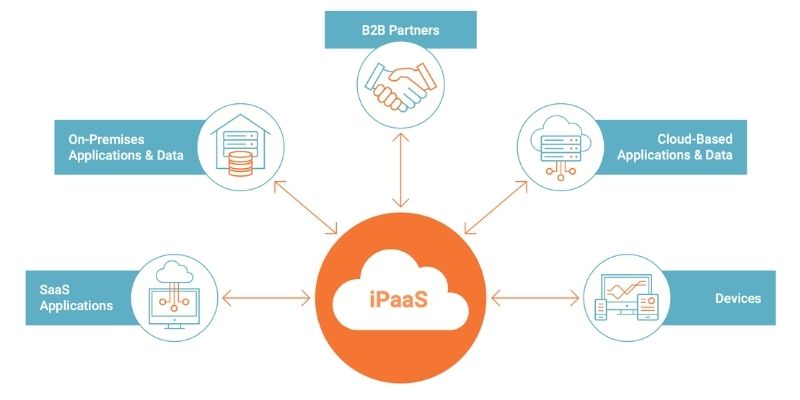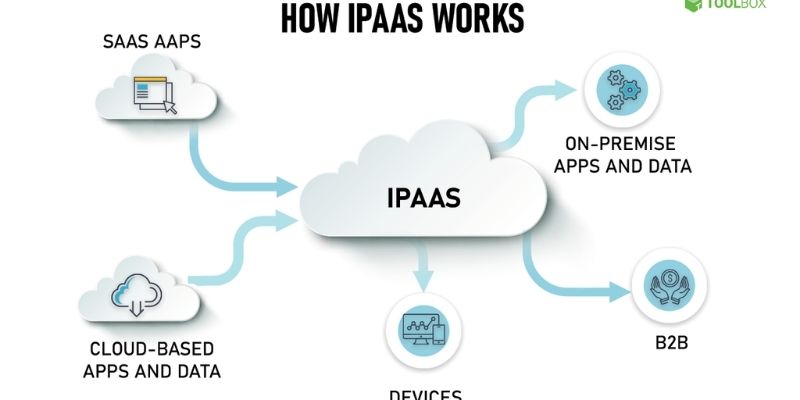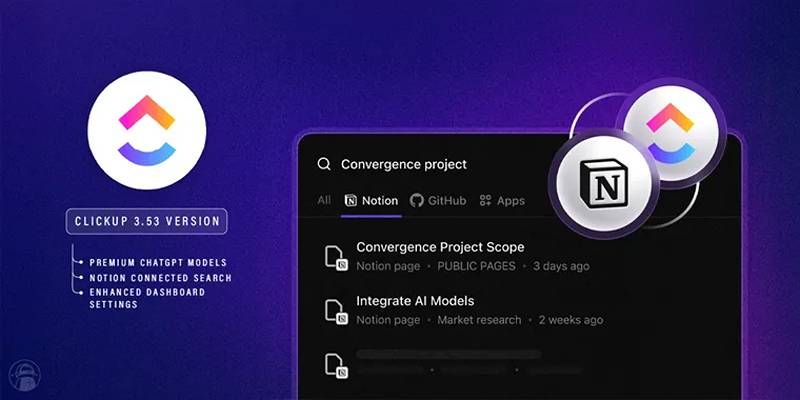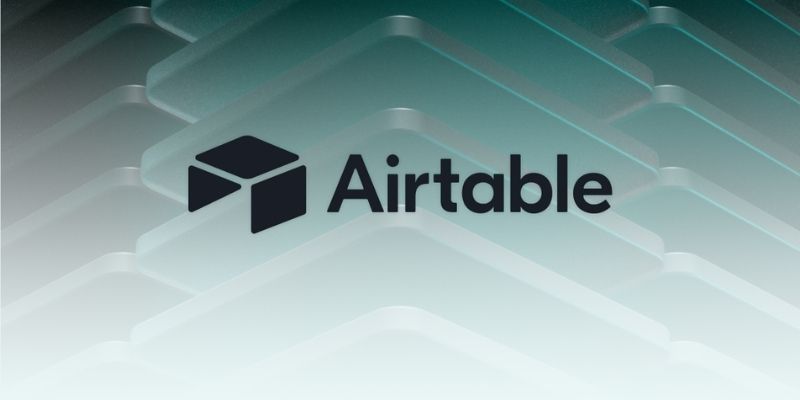iPaaS Demystified: What Integration Platform as a Service Really Means
Advertisement
In today's fast-paced, competitive business environment, firms employ multiple applications, platforms, and data sources. These systems usually include many providers, platforms, and storage options, such as on-premises or cloud. This chaotic digital environment might lead to data gaps and broken procedures, making firms less adaptable and productive. Here comes iPaaS.
New networking concepts like iPaaS overcome these concerns. It helps organizations connect, govern, and organize data across cloud and on-premises applications and systems. Companies must comprehend iPaaS's advantages, key features, and challenges to properly understand it. This blog discusses iPaaS and its game-changing potential.

What is iPaaS?
Integration Platform as a Service Cloud-based iPaaS connects data sources, systems, and applications for businesses. It simplifies information flow so systems may communicate and exchange data. With iPaaS, enterprises can manage cloud-based apps, on-premises systems, and mixed IT configuration connections with one tool.
The nicest part about iPaaS is that it can integrate, alter data, and connect applications. Integrations may be set up and maintained using iPaaS without private code or visual interface processes. Due to built-in connectivity, many iPaaS platforms make connecting to CRM, ERP, and marketing automation solutions straightforward. You don't need coding skills to achieve this.
Now that cloud computing and SaaS are better, iPaaS is crucial. Businesses need a single approach to integrate their cloud and on-premises systems more than ever as they employ more cloud services. iPaaS creates flexible, scalable connections between systems, applications, and data.
Cloud migration from on-premises
Consider how connection has evolved to understand iPaaS. Businesses connected their systems with complicated data streams and specialized applications before cloud computing became mainstream. These choices were expensive, time-consuming, and challenging to scale. Due to technological and equipment requirements, organizations have to slow down while adding applications or expanding systems.
SaaS replaced on-premises applications due to cloud computing. SaaS applications are expandable and accessible anywhere. Integration with the cloud produced extra issues. To integrate cloud applications with on-site systems, companies required unique tools and software.
A cloud-native platform that blends cloud and on-premises systems, iPaaS, can tackle this challenge. iPaaS is versatile and scalable, unlike other connections. Businesses can swiftly integrate applications, automate processes, and increase data sync throughout the digital ecosystem.
How does IPaaS work?
iPaaS simplifies integration creation, management, and monitoring. Services and technologies simplify data migration between on-premises and cloud systems on the platform. In short, iPaaS enables organizations to migrate data across applications and make it compatible with others.
Users may pick pre-made or custom links. These connections allow devices to communicate and exchange data. Businesses may change data formats on iPaaS systems using data transfer tools. Data may need to be transferred from an old CRM to a new marketing automation application. This allows all interaction tools to utilize the same data in any format.
After connecting, iPaaS platforms handle operations and sync data in real time. When an e-commerce platform makes a sale, an iPaaS solution may update CRM customer information without consumer intervention. This reduces errors and manual data input by updating all systems. Businesses may develop, regulate, and monitor system APIs on iPaaS platforms using API management tools.
Reasons to use iPaaS
IPaaS benefits enterprises with many interconnected systems and applications. It's excellent that iPaaS saves money. Handcrafted integration solutions cost more and take longer. Using pre-built connectors and models speeds up business integration and reduces expenses.
iPaaS may expand as required. Adding new applications to existing systems is simpler with iPaaS as firms develop. Cloud-native iPaaS lets enterprises expand connections without adding hardware. Scalability is crucial for fast-growing companies that must respond to market changes.
iPaaS increases corporate flexibility. Businesses may connect quicker, simplify procedures, and optimize routines using iPaaS to adapt faster to market and consumer changes. Businesses may design and launch new services without interface issues by linking several systems and applications to the platform.
Important iPaaS Facts
Businesses can consider several criteria when choosing an iPaaS to satisfy their interaction demands. Prebuilt linkages are crucial. These connectors let companies swiftly integrate CRM, ERP, marketing, and other platforms. Prebuilt connectors speed up merging.
Look for fact-changing talents. Several iPaaS platforms provide strong data transfer mechanisms to ensure system compatibility. Programs that handle various data patterns or files need this functionality. Workflow automation matters too. IPaaS workflow automation solutions may change customer information, generate reports, and process orders without human intervention.
Security is crucial while picking an iPaaS. These systems handle private company data; thus, they need iPaaS providers with data security, multi-factor login, and GDPR and HIPAA compliance. The platform enforces strong security measures to protect data and the enterprise.
Real-World IPaaS Use Cases
Because of its flexibility, iPaaS may be utilized in many businesses and scenarios. IPaaS may integrate product management systems, online storefronts, payment channels, and delivery platforms for e-commerce. Buyers don't have to worry whether the item they desire is in stock since this refreshes the quantity in real time.
EHR systems may be connected to healthcare appointment, billing, and insurance payment systems via iPaaS. Integrating these technologies enhances patient care, efficiency, and cost. Financial data tools may be connected to banking systems via iPaaS for real-time reporting and choices. This relationship helps banks educate consumers and improve choices. Similarly, iPaaS may integrate shop point-of-sale systems with supply chain management solutions to improve inventory and delivery.

Problems Setting Up iPaaS
Even though iPaaS offers numerous advantages, enterprises should consider its drawbacks before using it. Using older machines with cloud applications is difficult. Legacy systems may employ outdated technology or private data that are incompatible with modern platforms. iPaaS can connect many systems; however, corporations may require unique abilities to interconnect old and new systems.
Another factor is iPaaS learning. Many iPaaS systems are straightforward to use, but setting them up requires technical knowledge. To ensure the platform works with their systems, businesses may need to educate personnel or engage integration specialists. If staff are acclimated to traditional integration methods, firms may struggle to adapt. Change management and leadership assistance are needed to overcome this reluctance.
Conclusion
iPaaS eliminates data silos, improves processes, and manages app-system linkages. IPaaS helps firms streamline processes, decrease expenses, and expand as needed. iPaaS combines cloud-based and on-premises programs to help enterprises maintain digital consistency across technology stacks. Despite its issues, iPaaS provides improved cost savings, scalability, and flexibility. More digital firms will make it simpler to adjust, develop, and flourish in a networked world.
Advertisement
Related Articles

What Is Bluesky and How Does It Stack Up Against Twitter?

ClickUp 3.53 Integrates Premium ChatGPT and Upgrades Notion Support

Record Your Screen in Stunning Quality: Top Software Picks for Windows Users

Zoho Uncovered: Why It Offers So Many Apps

OpenSUSE Tumbleweed Integrates Linux 6.14 and OpenSSH 10.0 Security

Understanding GPT: Everything You Need to Know

YubiKey Explained: What It Is and How It Works

Top 3 Google Tools for Better Communication

Capture in XviD: 8 Apps That Make It Easy and Efficient

How to Combine Video Files Using VLC Media Player

Airtable 101: What It Is and Why It’s Popular

 novityinfo
novityinfo